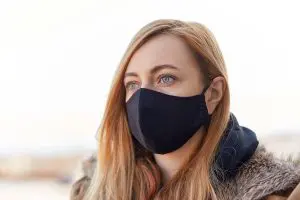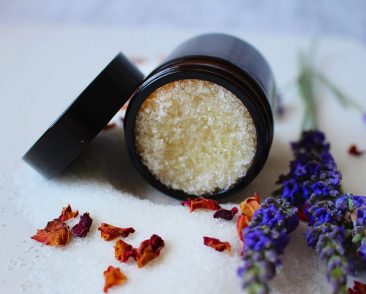Our hearts go out to all of our readers impacted by COVID-19, whether through health or economic challenges, derailment of life plans, or loss of loved ones. It is our hope that this article will be of some use in helping you deal with the unprecedented situation in which we find ourselves as a global community. The available information about this virus changes from day to day, and there may be new understandings by the time this Journal is printed. Nonetheless, we wish to add our voice to the positive sources of information being put forward at this time. Best of health to you and your families. – Editors
Everyone reading this article will already have encountered a great deal of information about COVID-19, and many of you may, of necessity, have learned more than you ever wanted to know. My goal here is to explain some of the basic concepts pertaining to this disease, as currently understood, and to discuss how healthy diet, nutrition, and lifestyle (healthy living) choices may be helpful during this challenging time. There are currently no medicines – natural or otherwise – and no dietary regimens that have been clinically shown to prevent COVID-19. However, we can draw upon our existing knowledge of health and disease to make decisions that are likely to enhance our immunity and resiliency during this pandemic.
What is a coronavirus?
Unlike bacteria, which are single-celled organisms that can survive and reproduce on their own, viruses have no cell walls. They consist of a core of genetic material, either RNA or DNA, generally surrounded by a protein shell called a capsid, and sometimes an outer envelope made up of lipids and proteins. These tiny microbes – smaller even than bacteria – do not perform any metabolic processes and require a living host in order to reproduce. Although they employ various replication strategies, a virus basically attaches to a host cell, injects its own genetic material into that cell, and takes over the cellular processes to produce multiple copies of itself.
Coronaviruses are a group of enveloped viruses that can cause disease in birds and mammals. Their name is derived from the fact that, when seen through an electron microscope, they resemble a sphere surrounded by a halo, or corona. This corona consists of numerous club-like spikes made up of glycoproteins (proteins with sugars attached) that protrude from the viral envelope. These spikes can hook onto specific types of cell membranes, allowing the genetic material of the virus to enter the cells. The genome of a coronavirus consists of a single strand of RNA. These viruses can mutate easily, as RNA replication is more error-prone than that of DNA. However, coronaviruses have the largest RNA viral genomes in nature, so they tend to mutate more slowly than other RNA viruses, such as those that cause different strains of influenza.
Seven coronaviruses are known to infect humans, including SARS-CoV, which causes severe acute respiratory syndrome; MERS-CoV, which causes Middle East respiratory syndrome; and four that cause common colds. The seventh, SARS-CoV-2, is the virus responsible for “coronavirus disease 2019,” or COVID-19. Although closely related to SARS-CoV, this new or “novel” coronavirus is more aggressive in humans. Remember that influenza is not caused by a coronavirus, although early symptoms of the flu and COVID-19 may be indistinguishable.
How does SARS-CoV-2 cause illness?
Our knowledge of how SARS-CoV-2 acts on the body is growing almost daily. Here, though, is a simplified explanation of some of its most common actions, based on current information. The virus enters the nose and throat through inhalation, and then the spike proteins bind to a transmembrane protein called angiotensin-converting enzyme 2 (ACE2), found on the surface of the cells lining the airways. (ACE2 is also present elsewhere in the body and plays a critical role in regulating processes such as blood pressure, wound healing, and inflammation.) The virus invades these cells, uses their structures to reproduce itself, and then breaks open the cells so the new viral particles can escape and search for more cells to infect. The immune system responds by attacking the virus, often causing inflammation and fever. At this stage, symptoms are likely to be minor, such as a cough and fatigue.
If the immune system fails to overcome the virus at this point, SARS-CoV-2 may progress downwards into the lungs, where it destroys both mucus-producing cells (which keep lung tissue moist and protect the lung from foreign organisms) and ciliated cells (which work to clear out foreign particles and organisms). Pneumonia can develop as damaged cells are shed, the lungs become clogged with fluid and debris, and the transfer of oxygen from the alveoli (air sacs) to the capillaries is disrupted. In some patients, a life-threatening condition called acute respiratory distress syndrome (ARDS) develops, in which oxygen levels plummet rapidly. The virus may also attack and damage other organs and tissues, including the gastrointestinal system, kidneys, liver, heart, blood vessels, and possibly the brain.
In some cases, many clinicians believe, the immune system overreacts disastrously, causing even more damage than the virus itself. Such overreactions, known to occur in other viral infections, are called inflammatory cascades or cytokine storms. Cytokines are small signaling molecules that help regulate the immune response. In a cytokine storm, the levels of certain cytokines rise far beyond what is needed. Inflammation rages out of control, and immune cells begin to attack healthy tissue (an autoimmune response). This can weaken the pulmonary blood vessels, so that they bleed into the lung alveoli. It can also affect the heart and other blood vessels, decreasing the blood supply to organs such as the liver, spleen, and kidneys, and potentially leading to the catastrophic shutdown of multiple organs.
How can you tell if you have COVID-19?
In the early stages, you may be unable to tell, unless you know that you have been in close contact with an infected person. COVID-19 can resemble the flu or other respiratory or viral diseases – one reason why accessible and accurate testing is so important. A brief summary of the initial symptoms, which generally appear from 2 to 14 days after exposure, reveals that the disease does not always manifest in the same way.
The most common initial symptoms are fever, cough, and tiredness. Others that may occur include body aches, chills, nasal congestion, sputum production, sore throat, nausea, vomiting, diarrhea, conjunctivitis (pink eye), headache, loss of taste or smell, skin rash, and discoloration of the fingers or toes.
With mild symptoms, people who are otherwise healthy can generally recover at home in a matter of weeks. However, if a person develops difficulty breathing, shortness of breath, chest pain or pressure, increased confusion, bluish lips or face, loss of speech or movement, or nonresponsiveness, medical attention should be sought immediately.
Sometimes, when people develop COVID-19 pneumonia gradually, they are unaware that their blood oxygen levels are falling, and they don’t seek out medical care until their oxygen saturation has dropped dangerously low. To avoid this situation, if you are monitoring mild COVID-like symptoms at home, it can be useful to have a device called a pulse oximeter. This usually clamps onto your fingertip and measures blood oxygen saturation as well as heart rate. Healthy blood oxygen levels are generally considered to be between 95% and 100%, and anything less than 90% usually indicates the need for medical attention.
Based on a large cohort of COVID-19 patients in China, it is estimated that 81% of cases involve only mild to moderate symptoms, while 14% of patients develop severe respiratory disease and 5% become critically ill.[1] Older adults and those with preexisting medical conditions, such as diabetes, cardiovascular disease, lung disease, immunodeficiency, cancer, and obesity are at increased risk of developing serious illness and are more likely to require hospitalization when infected with SARS-CoV-2. According to the CDC, 80% of people who die from COVID-19 are over the age of 65.[2] However, younger people are not immune from infection, and deaths occur in all age groups, including in a relatively small number of children.
How can you protect yourself and others?
It is believed that the virus is primarily spread via inhalation of relatively large respiratory droplets expelled from the mouths or noses of infected persons via coughing or sneezing. These droplets don’t generally travel very far (usually less than six feet), and they don’t stay in the air very long before settling to the ground or other nearby surfaces. Recent evidence also suggests that much smaller droplets called bioaerosols – released not only when we cough or sneeze but also when we talk or even breathe – can remain airborne for much longer periods of time and travel greater distances on air currents. Touching contaminated surfaces with your hands and then touching your mouth, nose, or eyes may be another means of transmission.
In the short term, the best way to protect yourself and others from infection is to avoid exposure. While the pandemic is in an active phase, it seems prudent to observe physical distancing whenever possible and use a face covering in public, especially when physical distancing is not practicable. Some health practitioners and organizations do not recommend that healthy persons wear masks. However, people are often unaware that they are asymptomatic or presymptomatic, so mask wearing can play an important role in limiting community spread and preventing a resurgence in cases.
Due to the current shortage of medical-grade face masks, the general public is encouraged to reserve them for healthcare workers, people who have COVID-19 or other respiratory conditions, and those taking care of ill or high-risk individuals. Note that prolonged wearing of N95 respirator masks may cause hypoxemia (low blood oxygen) or hypercapnia (elevated CO2 levels in the blood), resulting in dizziness, headaches, and shortness of breath. However, the greater air permeability and relatively loose fit of nonmedical cloth masks make it less likely for wearers to experience these problems. Masks are not recommended for children below the age of two or people with breathing difficulties.
While nonmedical cloth masks are more effective at protecting others, they do provide some degree of protection to the wearer. Exactly how much protection they afford depends upon the material(s) used (tightly woven quilting cotton is one good choice), the number of layers they consist of, and how snugly they fit the face.
Frequent handwashing is another basic method of protection. Undoubtedly, you already have heard about the importance of washing your hands with soap and water for at least 20 seconds. The main reason this is effective is that soap dissolves fats. Thus, it dissolves the lipids in the coronavirus envelope, and the virus basically falls apart. Scrubbing is an important part of this process – you should rub the soap and water into your skin for the full 20 seconds or more before rinsing. The use of antibacterial/antiseptic soaps is strongly discouraged; there is no evidence that they are more effective than plain soap and water, and they frequently contain potential toxins, such as benzalkonium chloride, as well as contribute to antibiotic resistance.

When soap and water aren’t available, an alcohol-based hand sanitizer is recommended. Finding hand sanitizer in the stores these days can be challenging, but it’s possible to make an effective product at home (and this can help you avoid potentially harmful additives, such as parabens and phthalates). The most important factor is the percentage of alcohol in the formula; according to the CDC, it must contain at least 60% alcohol to deactivate the virus. One basic do-it-yourself formula that meets the CDC target is two parts grain alcohol (ethanol) to one part aloe vera gel, which helps counteract the drying effects of the alcohol. (Because isopropyl alcohol is a toxic substance, we do not recommend its use on the skin.) Optionally, a few drops of an antimicrobial and pleasant-smelling essential oil such as lavender may be added. Some medical experts discourage making hand sanitizer at home, as using incorrect percentages can result in an ineffective product, and the mixture can become contaminated with bacteria. Be sure to keep homemade hand sanitizers out of the reach of children.
Another way to help protect yourself and others in your household is by regularly cleaning frequently touched surfaces in your home, such as doorknobs, light switches, countertops, faucets, phones, and computer keyboards. For washable surfaces, soap and water is a good choice. Other substances that can inactivate the virus on surfaces include 70% alcohol, 3% hydrogen peroxide, and a dilute solution of bleach – but bleach is highly toxic to both our bodies and the environment, and we strongly recommend against its use in the home. (Do not use bleach in hand sanitizer.) For those seeking natural disinfecting products, be aware that vinegar is not believed to be effective against this virus. However, some natural disinfecting wipes and liquids containing thymol as their active ingredient, such as CleanWell disinfecting products and Seventh Generation products that contain the patented formulation CleanWell Inside, meet the EPA criteria for use against SARS-CoV-2.
Boosting immunity with diet and lifestyle
As yet, no specific diets, supplements, or lifestyle practices have been validated in clinical studies as helping to protect against COVID-19 or mitigate its severity. However, there are many natural strategies known to enhance general immunity and/or boost antiviral protection. A well-balanced, anti-inflammatory diet and healthy lifestyle habits are good places to start, and nutritional supplementation and herbal medicines can provide additional support.
Significantly, obesity is a major risk factor for hospitalization with COVID-19, and people with diabetes or heart conditions face greatly elevated risk of serious complications or death from the virus. Obesity, diabetes, and heart disease are widespread in the United States, and one thing all of them have in common is that dietary and lifestyle factors can play a major role in their development, as well as aid recovery. Among diabetic patients, the risk of severe illness from COVID-19 is less if blood sugar is well-managed.
Healthy diet
Many articles in this Journal have elaborated on the dietary principles that support both balanced blood sugar and enhanced immunity. Diets high in sugar and refined carbohydrates promote metabolic diseases, including diabetes and obesity. In addition, such diets depress immune function. To boost immunity, limit sugars and refined carbohydrates; eschew nutrient-deficient, overly processed foods; and avoid pesticides and other endocrine disruptors. Also avoid genetically modified foods, which have been shown in animal studies to cause immune dysregulation, including upregulation of inflammatory cytokines.[3] When possible, choose organic produce and pastured animal products.
Selecting a wide variety of nutrient-rich foods is also important. Eat a “rainbow” of brightly colored vegetables and fruits to obtain a broad range of flavonoids and other phytonutrients. Flavonoids have antioxidant and anti-inflammatory properties, and many have been found, in vitro, to reduce signaling of the NLRP3 inflammasome, a multiprotein complex in the innate immune system that results in the activation of highly inflammatory cytokines in COVID-19.[4] Examples of flavonoids shown to have this effect include quercetin, found in foods such as onions, grapes, broccoli, and apples; myrectin, in tomatoes, oranges, nuts, and berries; curcumin, in turmeric root; and epigallocatechin gallate (EGCG), in green tea.
Animal protein can also play an important role in immune health. Compelling evidence shows that amino acids and other compounds found only in animal tissue—such as taurine, creatine, and carnosine—play a role in inhibiting inflammation, improving metabolic profiles, and enhancing immunity.[5] Preformed vitamin A (retinol), critical to immune function, is also found only in foods from animal sources, including meat (especially liver), fish, dairy products, and eggs. Oily fish such as salmon are excellent sources of the omega-3 fatty acids eicosapentaenoic acid (EPA) and docosahexaenoic acid (DHA), which have immunoregulatory roles. To get the greatest benefits from animal products, choose pastured, organic meat and dairy and wild-caught, low-mercury fish.
Stress management
Our stress levels greatly affect our immune system. Prolonged psychological stress can hinder the body’s ability to regulate the inflammatory response and promote the development and progression of disease. The overproduction of the stress hormone cortisol elevates blood sugar and inhibits communication between the white blood cells that protect us from infection. Chronic stress is also associated with increased production of proinflammatory cytokines, such as interleukin-6, which tends to be elevated in complicated cases of COVID-19 and is associated with adverse clinical outcomes.
During times of high stress, it is especially important to practice techniques that can help you relax and maintain physical, psychological, and emotional equilibrium. Activities such as meditation, breathing exercises, yoga, journaling, and creating art can help you maintain healthy immune function. Walking or simply spending time in nature can be highly beneficial. Because social isolation may increase inflammation and decrease immunity,[6] staying socially connected online or by phone can provide physical as well as emotional benefit. Cultivating positive thoughts and emotions can also boost your immune system and general health.
Many of us are currently experiencing fear or anxiety about our health, finances, and/or the world situation. Stress and anxiety can lead to various issues, such as difficulty sleeping, creation or worsening of mental health conditions, or increased use of alcohol or drugs. If you are having stress-related difficulties, reach out to someone – a friend, a counselor, a doctor, or even a crisis center. Many health professionals who usually see clients in person are now taking telemedicine appointments.
Sleep hygiene

Healthy sleep habits are critical to immune function. Although individual needs vary, many people require seven to eight hours of sleep per night for optimal functioning. While a couple of nights of poor sleep are unlikely to do much harm, chronic sleep deprivation can weaken the body’s ability to fight off pathogens. With regard to COVID-19, sleep deprivation also increases levels of a proinflammatory cytokine known as CXCL9, thus increasing risk of oxidative tissue damage. Tips to improve sleep quality include rising at the same time each day, keeping the bedroom dark, and turning off electronic screens that emit blue light – including phones, computers, and televisions – two hours before bedtime.
Exercise
It may be difficult to maintain your customary exercise program at present, but finding a way to keep physically active is important for everyone, particularly older adults. Not only can moderate exercise help to counter the psychological effects of isolation and stress, but it reduces inflammation and directly mobilizes immune cells, including those that are capable of finding and killing virus-infected cells. It also increases the flow of blood and lymph as muscles contract.
Depending on your level of fitness, try to get at least 30 minutes of low- to moderate-intensity aerobic exercise five days per week. Walking and bicycling are good and can be done while physical distancing. Many fitness organizations and companies are currently offering free online workout classes and other resources for use at home. Staying physically active can also help keep your lungs healthy, although the World Health Organization warns that you not exercise if you have a fever, cough, and difficulty breathing.
Protective nutrients
Although we have as yet little to no clinical data regarding the actions of specific nutrients in relation to COVID-19 in humans, various nutrients are known to boost protection against other viral infections and/or decrease their severity or duration. Here are a few that may be useful against SARS-CoV-2 as well.

Zinc
A mineral known for its immune-enhancing benefits, zinc reduces viral replication in other coronaviruses and may provide the same benefit in COVID-19. Specifically, it may block the virus from multiplying in the mucous membranes of the throat and nasopharynx (the upper part of the throat, behind the nose), as well as inhibit viral entry into cells.
Zinc lozenges have been shown to reduce the duration of colds when taken within 24 hours of symptom onset at dosages greater than or equal to 75 mg per day. This dosage is higher than the Food and Nutrition Board’s tolerable upper intake level (UL) for adults, which is 40 mg per day. (The UL is also meant to include zinc intake from food sources, such as oysters, beef, chicken, lentils, oatmeal, and shiitake mushrooms.) Recommended daily dosages of zinc for antiviral protection usually range from 15 mg to 30 mg. Daily dosages of 150 mg for one to two weeks during times of active infection are considered generally safe for persons with adequate copper status.
Zinc supplements can have some side effects, which may include nausea, especially if taken on an empty stomach. They can also interfere with the absorption of some pharmaceuticals, such as the antibiotic tetracycline. Moreover, taking large amounts of zinc—generally over 150 mg per day – on an ongoing basis can lead to toxicity and result in copper deficiency, anemia, and nervous system damage. Intranasal zinc is not recommended, as it has been linked with temporary or permanent loss of the sense of smell in some people.
Vitamin D
This vitamin plays an important role in immune function, and it has both anti-inflammatory and antioxidant actions. Supplementation can lower your odds of developing an acute respiratory infection, especially if your levels are sub-optimal. In addition, recent research on COVID-19 patients worldwide found a strong correlation between vitamin D deficiency and increased risk of cytokine storm, as well as a correlation between deficiency and mortality from the disease.[7]
It’s best to have your vitamin D levels checked with a hydroxyvitamin D (25[OH] D) blood test to determine the level of supplementation needed. While the Office of Dietary Supplements (ODS) considers 20 ng/ml (equivalent to 50 nmol/L) to be sufficient for most people, many healthcare providers suggest higher levels. The Grassroots Health Nutrient Research Institute, a nonprofit public health research organization, recommends a blood level of 40-60 ng/ml (100-150 nmol/L).[8]
Even if you can’t get your vitamin D levels checked right now, supplementation is generally advisable, as many people are deficient. A daily intake of up to 4000 IU from all sources is considered safe for most adults by the ODS.[9] Vitamin D toxicity may occur with extremely high-dose, long-term use, but has not been linked to intakes below 10,000 IU per day.[10]
The preferred form of vitamin D supplement is D3, which is found in animal-based foods. Vitamin D is fat soluble, so supplements should be taken with a source of healthy fats. Foods that provide vitamin D3 include salmon, other fatty fish, beef liver, and egg yolks. Cod liver oil is an excellent source (in addition to containing vitamin A and the omega-3 fatty acids DHA and EPA).
Vitamin C
Clinical trials are currently underway to evaluate the effectiveness of intravenous vitamin C in treating hospitalized patients with severe COVID-19. This therapy shows promise due to the antiviral and antioxidant properties of vitamin C and its potential to inhibit the production of cytokine storms characteristic of ARDS. Intravenous therapy has previously been seen to reduce complications in sepsis cases, and its recent use in patients with moderate to severe COVID-19 in Shanghai reportedly resulted in improvement in all cases and a reduction in length of hospital stay, compared to that of other patients.[11]
Oral vitamin C supplementation cannot raise blood ascorbate levels as much as intravenous therapy, and its benefit in protecting against SARS-CoV-2 or mitigating its symptoms is unknown. However, we do know that vitamin C deficiency is associated with impaired immunity, and that the body’s need for this vitamin increases during infection. Oral supplementation has been used to shorten the duration and severity of the common cold and reduce the risk of pneumonia.
Typical dosages of oral vitamin C supplements range from 500 to 3000 mg per day, in divided doses, although higher amounts are often recommended during times of active infection. Liposomal products, in which the vitamin is encapsulated by a phospholipid bilayer membrane to protect it from damage during the digestion process, may provide greater bioavailability than unencapsulated ones. Side effects of high-dose vitamin C may include nausea and mild diarrhea, and can usually be eliminated by reducing dosage. In addition, supplementation at dosages over 1000 mg per day may raise urinary oxalate levels, potentially increasing risk of kidney stones in men who are predisposed to them.
Fruits and vegetables are rich in vitamin C, and some of the best sources include oranges, grapefruit, red and green peppers, kiwis, broccoli, strawberries, dark leafy greens, Brussels sprouts, and cantaloupe. Interestingly, liver, fish roe, and eggs are also good sources of vitamin C, and smaller amounts can be found in other meat and fish. This vitamin is water soluble and can be destroyed by heat, so raw foods contain the highest amounts. Cooking foods for shorter times and at relatively low temperatures can help to maximize vitamin C retention.
Herbal medicines
There are a great many herbal medicines that can boost immunity, combat viruses, reduce inflammation, or relieve the symptoms of respiratory infections. Often, the most effective herbs for an individual can best be determined through clinical assessment by a trained practitioner. Those listed below are among the herbs commonly used to protect against viral infections.
Astragalus root modulates immune response and has antioxidant and anti-inflammatory effects. In traditional Chinese medicine (TCM), it has a variety of uses, including tonifying the lungs, alleviating shortness of breath, and protecting against colds and flu (although it should be discontinued in acute infections accompanied by fever). It is also one of the most frequently used herbs for the prevention of COVID-19 in China. This root has traditionally been cooked into soup or made into tea. It is often combined with other herbs in TCM formulas, but can also be taken alone in tea, powder, or tincture form. The use of astragalus in combination with echinacea and licorice can have a synergistic effect to enhance immune function.12 Because of its potential immunostimulatory effects, it may be contraindicated for those with autoimmune diseases such as multiple sclerosis, lupus, and rheumatoid arthritis, who should discuss its use with their healthcare practitioner.
Echinacea is used widely to help ward off colds and flu. It promotes immune system function and has been shown to lower the risk of recurrent respiratory infections, reduce the occurrence of colds, and inhibit viral replication. An echinacea concentrate was found to be as effective as the anti-influenza drug oseltamivir (Tamiflu) in early treatment of the virus.[13] Although echinacea can stimulate certain proinflammatory cytokines, it exhibits a net anti-inflammatory effect on cytokine production. (See the discussion on cytokine storms in the elderberry paragraph, below.) Echinacea is used in succus (expressed juice), tincture, tea, or powder form. As with astragalus, those with chronic autoimmune conditions may wish to avoid this herb or consult their healthcare practitioner before its use.
Licorice root is a powerful antiviral that is effective across a broad range of viruses, including those of the SARS group. It inhibits viral uptake, prevents viral replication, inactivates virus particles, and inhibits cytokine cascades. It specifically blocks viral attachment to ACE2 receptors. In addition, licorice is an immunostimulant and immunomodulant and acts as a synergist with other herbs, boosting their potency. The strong antiviral properties of licorice are due to a constituent called glycyrrhizin, which gives the herb its sweet taste. Deglycyrrhized licorice (DGL), which is frequently used for gastrointestinal ailments, is not effective for antiviral use. Long-term use of licorice (not DGL), especially when taken alone and in large doses, can cause serious side effects, including edema, hypertension, and potassium depletion. The root also has strong estrogenic activity. Licorice is thus best used in combination with other herbs and usually not for longer than four to six weeks. During pregnancy or with health conditions such as hypertension, hypokalemia, hyponatremia, and low testosterone, use should generally be restricted to ten days or less at low dosages. It is available in tincture, capsule, or powder form, and is frequently prepared as a tea. A clinical herbalist can help you determine a suitable formula to combat severe infections.
Elderberry is a popular herb used to prevent and treat influenza and other upper respiratory infections. It has antioxidant, anti-inflammatory, immune-protective, and antiviral qualities. It is known to reduce both symptoms and duration of colds and flu, and may be most effective in this regard when taken as soon as symptoms appear. The seeds contain compounds that can cause nausea and vomiting if the berries are eaten raw, but these compounds are deactivated by heat or fermentation. Thus, it is generally recommended that the berries be cooked (e.g., into syrup, a classic herbal remedy). It can also be taken in lozenge form, where it is often combined with ingredients such as vitamin C and zinc. Recently, concerns have been raised about whether elderberry could potentially induce or exacerbate cytokine storms due to its action on certain proinflammatory cytokines, and some health practitioners suggest discontinuing its use in active COVID-19 infection. Others believe this concern is unfounded for various reasons, including the fact that elderberry extracts have been shown to enhance both inflammatory and immunoregulatory cytokines, with a net noninflammatory gain.[14] There is no evidence that elderberry causes cytokine storms in humans.
Garlic has well-documented immune-boosting and antiviral properties and can reduce the frequency and severity of colds and flu. It contains numerous antimicrobial compounds, but allicin, which is formed when fresh garlic is chopped or crushed, has been the most widely researched. Allicin can modulate the immune response to viral infections, inhibit viral multiplication, and block the release of proinflammatory cytokines. To maximize the allicin content in garlic, either eat it raw or let it stand for 10 minutes after crushing or chopping before you cook it. Aged garlic extract, which does not contain allicin, exhibits strong antioxidant properties. It can enhance immune cell functioning and reduce severity of colds and flu, and may help resolve virally induced inflammation. Aged garlic extract is available in capsules and liquid form.
Concluding thoughts
With the passage of time, we will undoubtedly gain more knowledge about how to protect ourselves against and treat COVID-19. New therapies may arise, and new insights may light the way toward putting this pandemic behind us. In the meantime, we can adopt those dietary practices and lifestyle habits that best support our natural immunity while avoiding behaviors that pose unnecessary risk. It is also vital to our health to maintain emotional balance and social connection despite the challenges of the current situation. Fortunately, we have a wealth of information available from the fields of nutrition and natural medicine that can guide us in making wise choices.
About the Author
 Roberta Louis is managing editor of the Price-Pottenger Journal of Health and Healing and was formerly editor of Well Being Journal and managing editor of Shaman’s Drum: A Journal of Experiential Shamanism and Spiritual Healing. She is the founder of the nonprofit Shaman’s Drum Foundation, located in the Pacific Northwest. Roberta is also a freelance writer and editor specializing in complementary and alternative healing methods, with a particular interest in plant medicines.
Roberta Louis is managing editor of the Price-Pottenger Journal of Health and Healing and was formerly editor of Well Being Journal and managing editor of Shaman’s Drum: A Journal of Experiential Shamanism and Spiritual Healing. She is the founder of the nonprofit Shaman’s Drum Foundation, located in the Pacific Northwest. Roberta is also a freelance writer and editor specializing in complementary and alternative healing methods, with a particular interest in plant medicines.
REFERENCES
- Centers for Disease Control and Prevention. Coronavirus Disease 2019 (COVID-19): Interim Clinical Guidance for Management of Patients with Confirmed Coronavirus Disease (COVID-19). https://www.cdc.gov/coronavirus/2019-ncov/hcp/clinical-guidance-management-patients.html. Updated May 20, 2020.
- Centers for Disease Control and Prevention. Coronavirus Disease 2019 (COVID-19): Older Adults. https://www.cdc.gov/coronavirus/2019-ncov/need-extra-precautions/older-adults.html. Accessed May 27, 2020.
- American Academy of Environmental Medicine. Genetically Modified Foods. https://www.aaemonline.org/gmo.php. Accessed May 31, 2020.
- Alschuler L, Weil A, Horowitz R, et al. Integrative considerations during the COVID-19 pandemic. Explore. Article in press. https://doi.org/10.1016/j.explore.2020.03.007. Published online March 26, 2020.
- Wu G. Important roles of dietary taurine, creatine, carnosine, anserine and 4-hydroxyproline in human nutrition and health. Amino Acids. 2020; 52(3):329-60.
- Smith KJ, Gavey S, Riddell N, et al. The association between loneliness, social isolation and inflammation: a systematic review and meta-analysis. Neurosci Biobehav Rev. 2020; 112:519-41.
- Daneshkhah A, Agrawal V, Eshein A, et al. The possible role of vitamin D in suppressing cytokine storm and associated mortality in COVID-19 patients. medRxiv. Preprint. https://doi.org/10.1101/2020.04.08.20058578. Published online April 30, 2020.
- Grassroots Health Nutrient Research Institute. Scientists’ Call to D*Action—The Vitamin D Deficiency Epidemic. https://www.grassrootshealth.net/project/our-scientists. Accessed May 30, 2020.
- National Institutes of Health Office of Dietary Supplements. Vitamin D Fact Sheet for Consumers. https://ods.od.nih.gov/factsheets/VitaminD-Consumer. Updated March 24, 2020.
- Ross AC, Manson JE, Abrams SA, et al. The 2011 report on dietary reference intakes for calcium and vitamin D from the Institute of Medicine: what clinicians need to know. J Clin Endocrinol Metab. 2011; 96(1):53-58.
- Cheng RZ. Can early and high intravenous dose of vitamin C prevent and treat coronavirus disease 2019 (COVID-19)? Med Drug Discov. 2020; 5:100028.
- Buhner SH. Herbal Treatment for Coronavirus Infections. www.stephenharrodbuhner.com › coronavirus.txt.pdf. Published March 1, 2020.
- Rauš K, Pleschka S, Klein P, et al. Effect of an echinacea-based hot drink versus oseltamivir in influenza treatment: a randomized, double-blind, double-dummy, multicenter, noninferiority clinical trial. Curr Ther Res Clin Exp. 2015; 77:66-72.
- Bergner P. Sambucus (Elderberry), Echinacea, and Cytokine Storm in Respiratory Infection. North American Institute of Medical Herbalism. https://www.naimh.com/coronavirus. Updated April 11, 2020.
Reprinted from the Price-Pottenger Journal of Health and Healing, Vol. 44, No. 1, www.price-pottenger.org.




